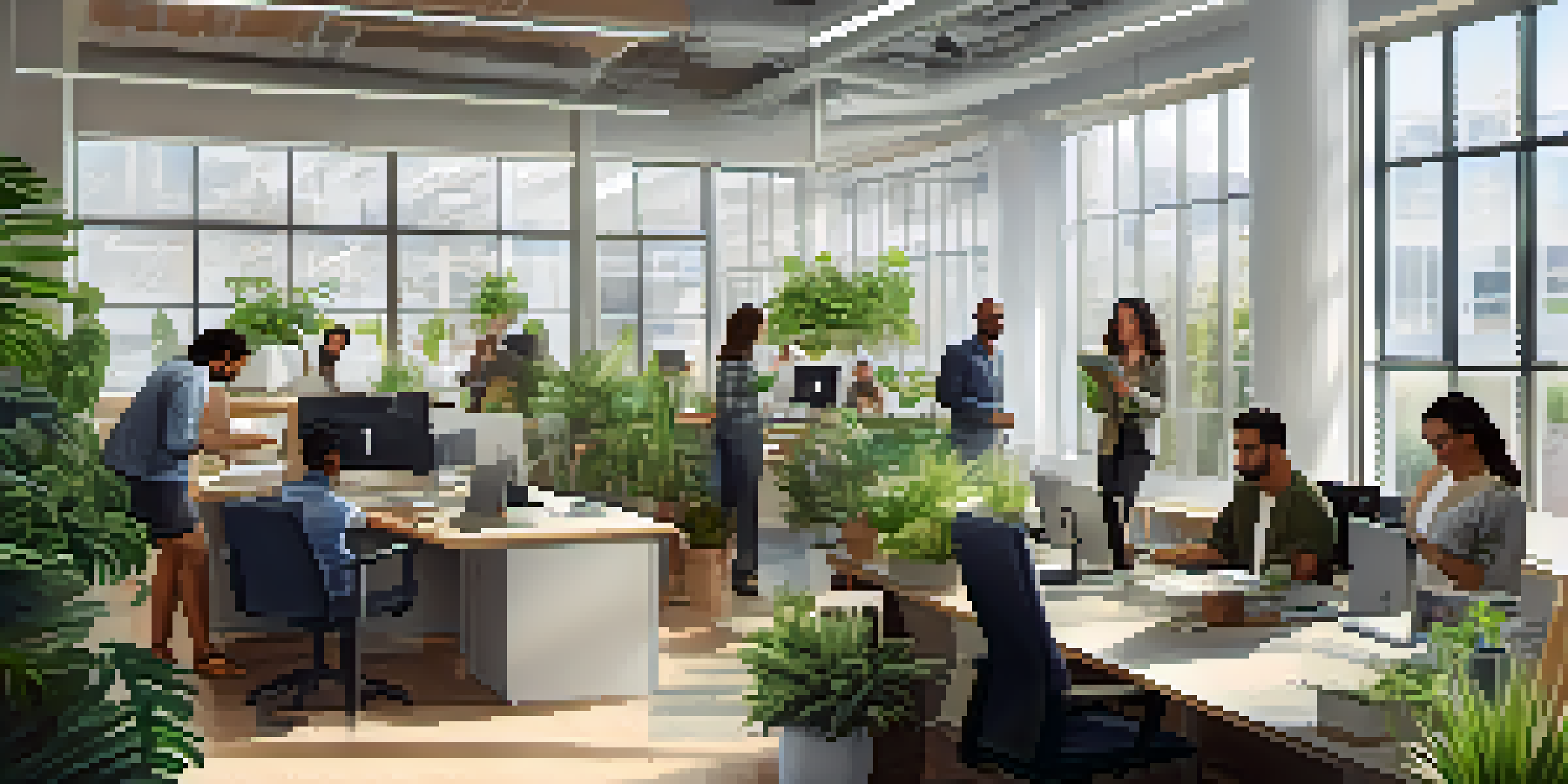Office Dress Codes: How They Are Evolving in 2023

The Rise of Casual Dress Codes in Modern Workplaces
In recent years, many companies have embraced a more casual approach to dress codes. This shift reflects a broader trend towards workplace comfort and individuality, allowing employees to express themselves more freely. A casual dress code can also reduce the pressure of adhering to strict attire rules, making the work environment feel more relaxed and inclusive.
Dress for the job you want, not the job you have.
As remote work became more prevalent during the pandemic, the lines between home and office attire blurred. Employees found themselves prioritizing comfort over formality, leading to a natural evolution in what’s considered appropriate for the workplace. Many organizations are now recognizing that a relaxed dress code can enhance employee morale and productivity.
This shift towards casual attire doesn't mean a lack of professionalism. Companies are redefining what 'business casual' means, allowing for a blend of comfort and professionalism that suits both employees and the company's image.
Inclusivity and Diversity in Dress Codes
Inclusivity is becoming a cornerstone of modern dress codes, with many organizations striving to represent diverse cultures and identities. This means recognizing the importance of clothing choices that reflect different backgrounds and beliefs, allowing employees to feel comfortable and authentic at work. Companies are now more willing to accommodate traditional attire or specific clothing needs.

For instance, businesses that have adopted gender-neutral dress codes support everyone’s self-expression, regardless of gender identity. This approach not only promotes a sense of belonging but also enhances overall workplace culture by celebrating diversity. Employees are more likely to thrive in environments that accept and honor their personal choices.
Casual Dress Codes Enhance Comfort
The shift towards casual dress codes promotes employee comfort and individuality, positively impacting morale and productivity.
Ultimately, the evolution of dress codes towards inclusivity helps foster a more cohesive team dynamic. When everyone feels accepted and valued for who they are, it leads to improved collaboration and innovation within the workplace.
The Impact of Remote Work on Dress Codes
The rise of remote work has had a profound impact on traditional dress codes. Many employees have traded in their formal attire for comfortable loungewear, leading to a reevaluation of what is deemed professional. This shift highlights that comfort can coexist with professionalism, even in virtual settings.
Fashion is the armor to survive the reality of everyday life.
Companies are now considering how dress codes apply to their remote teams, often opting for guidelines that prioritize comfort while still encouraging a professional appearance during virtual meetings. This flexibility allows employees to feel at ease while maintaining an appropriate level of professionalism in their interactions.
As the remote work trend continues, organizations may adopt hybrid dress codes that cater to both in-office and remote employees, fostering a sense of unity while respecting individual preferences.
Sustainability and Ethical Fashion in Dress Codes
Sustainability is increasingly influencing dress codes as companies seek to align their values with environmentally friendly practices. More organizations are encouraging employees to wear sustainable or ethically sourced clothing, promoting a culture of responsibility and awareness. This approach reflects a growing recognition of the fashion industry's impact on the environment.
Encouraging sustainable fashion choices can manifest in various ways, from hosting clothing swaps to partnering with ethical brands for employee discounts. By fostering an environment that prioritizes sustainability, companies not only enhance their brand image but also motivate employees to make conscious wardrobe choices.
Inclusivity Shapes Modern Attire
Dress codes are evolving to embrace inclusivity, allowing diverse clothing choices that reflect employees' backgrounds and identities.
As businesses adopt sustainable dress codes, they set a positive example in promoting eco-friendly practices, inspiring employees to think critically about their fashion consumption and its effects on the planet.
Technology's Role in Shaping Dress Codes
Technology is playing a pivotal role in the evolution of office dress codes, influencing how employees approach their attire. Virtual dress code guidelines can be easily shared and communicated through platforms like Slack or company intranets, making it simpler for everyone to stay informed. This transparency helps employees understand expectations, especially in a rapidly changing work environment.
Moreover, fashion tech innovations are providing new avenues for expression. From smart fabrics that adapt to temperature changes to clothing designed for maximum comfort during long hours at the desk, technology is integrating into our wardrobes in exciting ways. This evolution means that employees can look professional without sacrificing comfort.
As tech continues to influence dress codes, it’s essential for companies to embrace these changes while considering the personal preferences of their employees. This balance can lead to an innovative and dynamic work culture.
The Role of Leadership in Defining Dress Codes
Leadership plays a crucial role in shaping and communicating dress codes within an organization. When leaders model the desired dress code, it sets a precedent for employees to follow. This demonstration of the dress policy helps establish clarity and aligns expectations across the team.
Effective communication from leadership about the reasons behind dress code changes can foster acceptance and understanding. When employees see that their leaders value comfort and inclusivity, they are more likely to embrace the new guidelines. This approach not only builds trust but also encourages a culture of openness and adaptability.
Technology Influences Dress Norms
Advancements in technology are reshaping office attire, making it easier to communicate dress expectations while enhancing comfort and style.
Moreover, when leaders actively support and participate in discussions about dress codes, it empowers employees to share their perspectives. This collaborative effort can lead to a dress code that truly reflects the values and culture of the organization.
Future Trends in Office Dress Codes
As we look ahead, the evolution of office dress codes is likely to continue, driven by changing workplace dynamics and societal expectations. We can expect even more flexibility and personalization in how employees choose to dress, reflecting their individuality while maintaining professionalism. The idea of 'dress for your day' may become a common mantra, allowing employees to tailor their attire to specific tasks or meetings.
Another trend to watch is the incorporation of wellness into dress codes. Companies may begin to encourage clothing that promotes physical comfort and mental well-being, recognizing the impact of attire on employee productivity and morale. This could lead to initiatives that support wearing clothing designed for movement or relaxation.

Ultimately, the future of dress codes will hinge on balancing professionalism with personal expression, inclusivity, and sustainability. As workplaces evolve, so too will the ways in which we dress, creating an exciting landscape for both employers and employees.